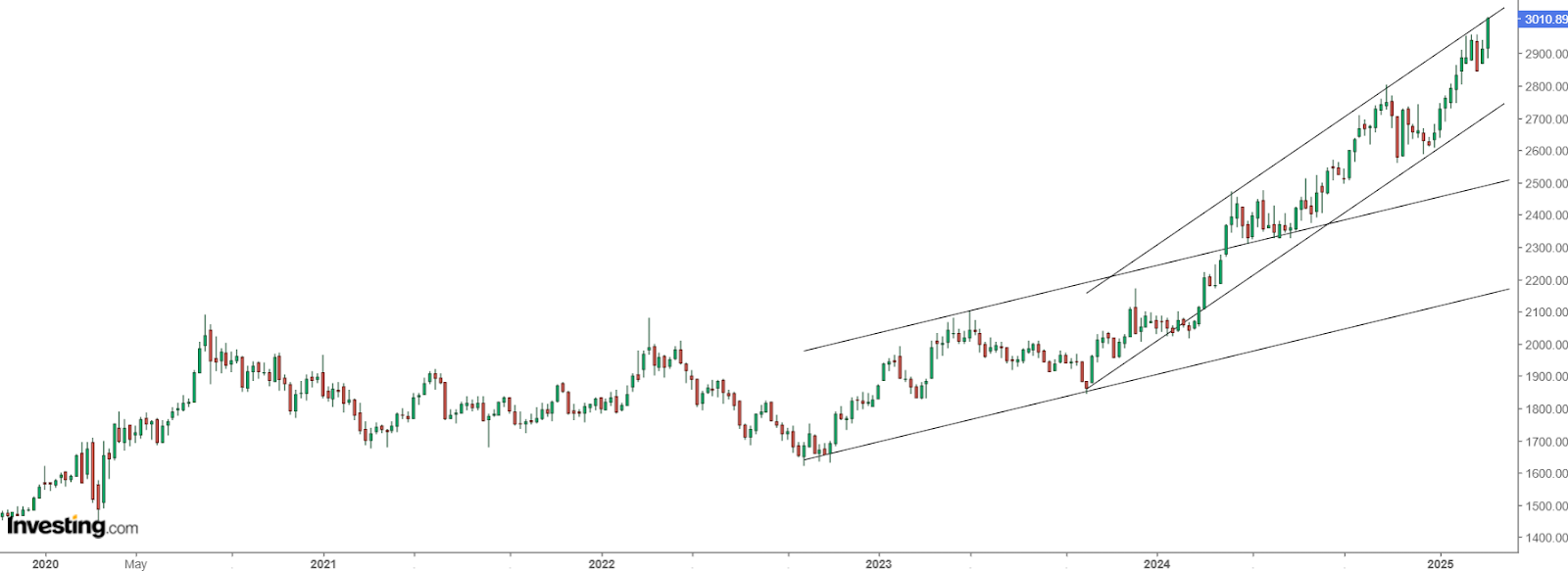By Ismael De La Cruz
Gold’s relentless rally shows no signs of slowing. Over the past five years, its price has doubled, and last week, it shattered the $3,000 barrier.

Even two potential headwinds—profit-taking after the surge and rising U.S. Treasury yields—failed to stall its momentum.
With the yellow metal charging higher, what’s keeping the rally alive amid increasing chances of prices breaching all-time highs?
Let’s break down the key forces that could continue fueling its climb.
- Declining U.S. Consumer Confidence
Plummeting consumer confidence in the U.S. has steered investors toward gold, seeking a stable store of value amid economic uncertainty. Concerns over a potential recession and escalating inflation expectations have further heightened gold’s appeal.
- Weaker U.S. Dollar
As gold is priced in U.S. dollar, a weaker greenback makes gold more affordable for investors holding other currencies, thereby boosting demand. Recent declines in the dollar’s value have contributed to gold’s price surge.
- Uncertainty Surrounding Trade Policies
Ongoing uncertainty regarding President Trump’s tariff policies has injected volatility into global markets. The anticipation of reciprocal tariffs and an intensifying trade conflict have driven investors toward gold as a safe-haven asset.
- Gold’s Safe-Haven Appeal Amid Economic and Inflation Concerns
Gold’s traditional role as a hedge against economic instability and inflation remains robust. With rising global debt levels and fears of a recession, investors are increasingly turning to gold to preserve wealth.
- Central Bank Purchases
Central banks worldwide, notably in China and Poland, have been augmenting their gold reserves to diversify assets and reduce reliance on the U.S. dollar. This structural support has significantly bolstered gold demand.
- Strong Demand from Retail Investors
Retail investors have shown heightened interest in physical gold bullion, contributing to the metal’s price appreciation. This trend reflects a broader move toward tangible assets amid economic uncertainties.
- Disruptions in the Gold Supply Chain
Recent logistical challenges have emerged, with major wholesale traders and commercial banks relocating physical gold from the London Bullion Market and the Bank of England to the United States. These disruptions have tightened supply, exerting upward pressure on prices.
What’s Next for Gold?
A few months ago, I highlighted gold as a top pick for 2025, with an initial upside target of $3,000 per ounce. That milestone was reached last week. Now, with Wall Street turning even more bullish, the next target looks to be $3,100.
The deteriorating U.S. budget outlook raises the risk of rising inflation, a scenario that has historically benefited gold. Meanwhile, ongoing geopolitical tensions and trade policies under Trump’s administration could further boost its appeal.
Gold’s bull run isn’t over yet. If these tailwinds persist, $3,100 may just be the next stop on a longer journey higher.
The Services and the Content are provided to you solely for your general informational purposes, and should not be considered as legal, tax, accounting, financial or investment advice. You are solely responsible for determining whether any investment is suitable for you, considering your investment objectives, risk tolerance and personal financial situation. It is also your responsibility to evaluate the merits and risks of using the information provided on this site before making any decisions.

